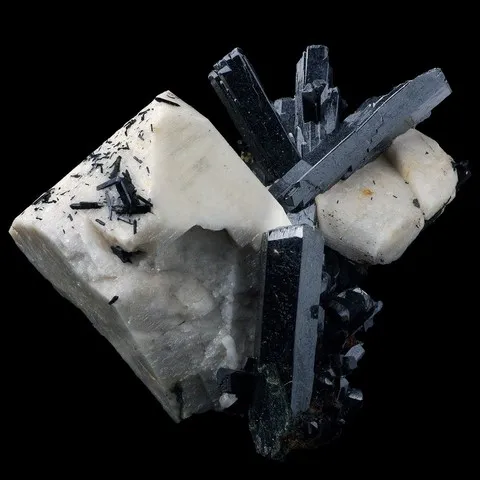AEGIRINE
Class : Silicates
Subclass : Inosilicates
Crystal system : Monoclinic
Chemistry : NaFeSi2O6
Rarity : Common
Aegirine is a sodium pyroxene characteristic of alkaline rocks, mainly nepheline syenites, carbonatites and associated pegmatites, where it is a faithful companion of sodium amphiboles. It is also an accessory component of rocks that have undergone extensive metamorphism (blue schists, granulites). It takes its name from Aegir the Scandinavian god of the sea. Its crystals are prismatic to acicular, with the faces of the prism striped vertically and the endings very sharp ; they can reach 35 cm and are commonly arranged in crested or rayed aggregates. The color is usually greenish black, dark green, more rarely reddish brown. It is a mineral that does not have a specific use, some crystals could be cut into faceted gems for the collection (photo below).
Aegirine in the World

Aegirine in France
In France, aegirine is known in the granite of Ota, in Southern Corsica as well as in the Bras de Cilaos on Reunion Island as microcrystals.
Twinning and special forms
Fakes and scams
No fake recorded for this species.
Hardness : 6
Density : 3.5 to 3.6
Fracture : Irregular
Streak : Yellow-gray
TP : Opaque to transparent
IR : 1.720 to 1.839
Birefringence : 0.037 to 0.061
Optical character : Baxial -
Pleochroism : Visible
Fluorescence : None
Solubility : weakly attacked by acids
Magnetism : Paramagnetic
Radioactivity : None

